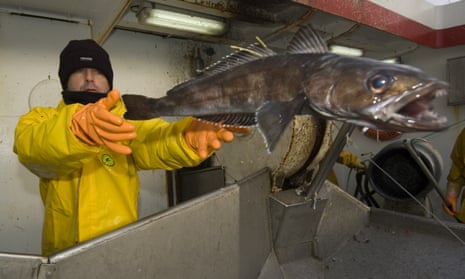A new project that uses technology to track the movements of food through the supply chain will aim to inform consumers whether items such as fish they buy at a restaurant were produced legally and sustainably.
The new venture is called OpenSC and uses product QR codes that consumers can scan with a smartphone to automatically display information on where the product was caught, when and how it was produced, what its journey through the supply chain looked like, and even its carbon miles and what temperature it was stored at.
The tracking platform, which has been developed with WWF and BCG Digital Ventures, follows an award-winning pilot by the environment NGO that tracked tuna caught in the Pacific.
To work, businesses dealing with products such as seafood must make a choice to attach a digital tag at the point of catch, and then again at the point of production, and link their products in a blockchain platform.
On Thursday, chef Matt Moran cooked one of the first products to be tracked using OpenSC – a Patagonian toothfish caught in sub-Antarctic waters by Austral Fisheries, an MSC-certified sustainable fishery that sells its fish into 13 countries.
The Patagonian toothfish is a deep sea fish that is prized by high-end restaurants and has historically been a victim of illegal poaching.
At a restaurant, consumers could scan either a set menu or a token to track the journey of the fish on their plate.
David Carter, the chief executive of Austral Fisheries, said the company was interested in the OpenSC project because it had taken steps to reduce its carbon footprint and wanted consumers to think about the climate impact of the foods they purchase.
“We see how climate change affects our fisheries and we want our products to be a catalyst for the choices consumers make around climate,” he said.
While the toothfish is a high-end product that average consumers might not eat, the developers of the platform say they plan to expand to larger markets and are working on projects with the beef and timber industries.
“The ambition here is to stretch across all the commodities that affect the degradation of this planet and human rights and workers’ rights,” the OpenSC CEO, Markus Mutz said. “We feel like the technology has the potential to absolutely reach the mass market and that is absolutely what we want to do.
“Some of the commodities that we are currently working on are well below the price point of the more exclusive fish like the Patagonian toothfish.”
Dermot O’Gorman, the CEO of WWF Australia, said the idea was to create “a whole new level of transparency about whether the food we eat is contributing to environmental degradation or social injustice such as slavery.”
